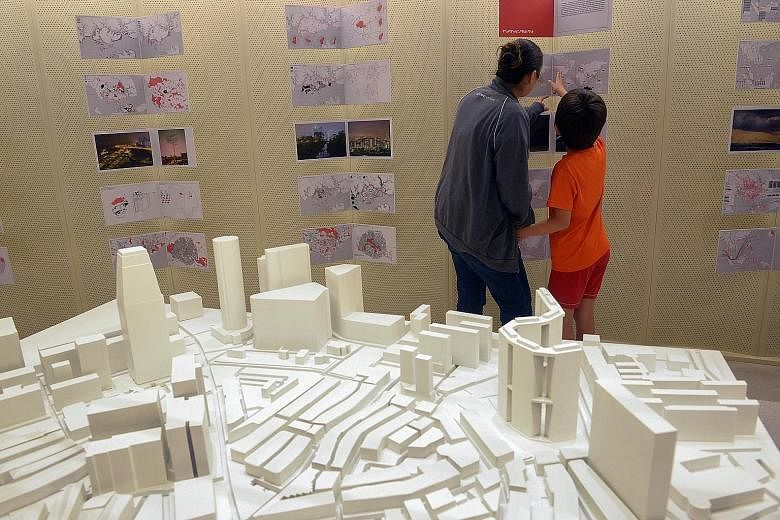The world's population could fit in an area the size of France if it were planned like Singapore - in other words, designed to hold 6.9 million people in each 718 sq km.
The second 1000 Singapores exhibition, commissioned by the DesignSingapore Council, looks at eight principles to suggest how future urbanisation and compact cities can be designed.
Called 1000 Singapores: Eight Points of the Compact City, it compares the planning strategies of Singapore and Paris.
The exhibition was officially opened yesterday at the National Design Centre atrium, following its Paris debut in June, as part of the Singapore Festival in France. Entry is free and it ends on Jan 28.
The exhibition comprises a circular display of 300 diagrams, drawings and photographs. These are accompanied by eight large-scale models, complementing the eight principles, or "points", of a compact city: density, territories, nature, infrastructure, urban models, governance, economics and architecture.
Besides comparing areas in Singapore and Paris with a similar population density, some models juxtapose parts of one city with the other.
"With the world population expected to swell to 9.5 billion by 2050, the world will become very crowded," said Mr Jeffrey Ho, commissioner of the exhibition and executive director of the DesignSingapore Council. "Through this exhibition, we hope to offer a glimpse of how we could address some of these urban planning and design issues to make compact cities more liveable, greener and energy-efficient."
Mr Khoo Peng Beng, one of the curators and founder of architecture firm Arc Studio Architecture + Urbanism, said: "When you say that you only need a land area the size of France to house the whole world, your imagination starts to change. Is that all we need?
"If we apply this idea of a compact city, maybe we don't need to occupy so much (space)... When our physical footprint becomes smaller, correspondingly, the resources we use and our carbon footprint, social footprint... could all be reduced."
The team's other curators are Mr Erik L'Heureux, assistant professor at the National University of Singapore, and Mr Florian Schaetz, director of design consultancy face2050.
Mr Chee Hong Tat, Minister of State for Communications and Information, said at the opening that the design sector here has grown over the years. Last Friday, Singapore was designated a Unesco Creative City of Design.
"This exhibition makes us think about a city's liveability and new challenges we may face in the future," he said.
On Jan 18, the curators of the exhibition will discuss issues on population, urbanism and the evolution of future cities at a public forum.


